Bye Sweet Carole review
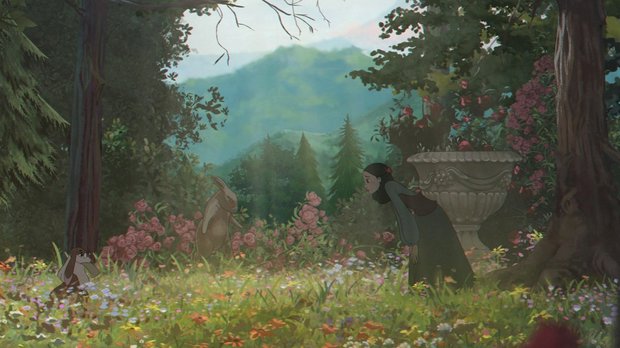
- 2 Comments
Say hello to a stunningly beautiful adventure that hops between intense encounters and a deeply emotional narrative
The challenge of growing up is a universal experience, even if the experience itself differs from person to person. Confronting the responsibilities inherent to adulthood for the first time can be scary and exciting all at once, and yet we all must go through that transition in life, whether we want to or not. Little Sewing Machine’s Bye Sweet Carole is a surreal, lovingly crafted side-scrolling adventure that plunges down a rabbit hole filled with nightmarish horrors both fantastical and all too real, as seen through the eyes of a troubled girl who never wants to grow up. The dangers you face are inconsistent in challenge, but Chris Darril’s unique vision and beautifully resonant story are more than enough to break free of the shadow cast by any minor issues.
You play as Lana Benton, a girl in her early teens who has spent much of her life at the Bunny Hall orphanage in an alternate version of early twentieth-century England. Her best friend Carole is missing, and while the other girls believe she has run away, Lana refuses to accept that she would leave without telling her. During her search for answers to where Carole could have gone, fantastical and terrifying events spring up that defy contemporary logic: small birds whisper that Lana is the lost princess of a mysterious kingdom called Corolla, and a horrifying shape-shifting stranger in a long coat and top hat called Mr. Kyn seems to be toying with Lana and pushing her into nightmarish scenarios that blur the line between dreams and reality. When a dark corruption begins causing the people of Bunny Hall to change into twisted monsters, it’s up to Lana to get to the bottom of it and live to find her missing friend.
Bye Sweet Carole is what happens when you combine the stalker horror and puzzle-solving gameplay of Clock Tower with the methodical movement of a cinematic platformer like Another World or the original Prince of Persia. Rather than pointing-and-clicking, you control Lana directly through puzzle-platforming sections on a 2D plane. While technically possible to play with keyboard inputs, the controls are designed for a gamepad and the game recommends using one. As Lana, you can push objects like crates, climb over obstacles, and interact with various environmental hotspots highlighted by faint yellow dots that appear when you walk near them to indicate something that can be operated/picked up/examined, etc. Lana even has a small kick you can deliver with the tap of a button that can help clear small bits of debris or convince a particularly stubborn lever to move.
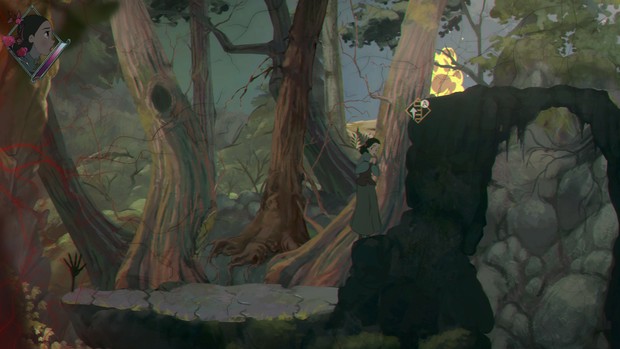
Lana’s movements are smoothly animated but incredibly methodical, with every motion feeling like it has a bit of build-up before execution. To move up or down most stairs, you have to walk up to them to see a hotspot icon appear and then push up or down on your thumbstick, or else Lana will continue her way along the same horizontal plane. You’ll have to help her over objects as well. Rather than being a single swift motion, Lana will slowly scramble her way over something only after you’ve moved close to it and hit the climbing input. It takes a bit of getting used to the extra commands, but once you get a hang of the timing, the mechanics fit well with the tense gameplay structure.
Bunny Hall is a strict boarding school where girls are shown how to behave properly to become desirable by the high-society men who run the newly industrialized world. Curiously, rabbits are a major theme throughout the story. The land outside the orphanage gates was once a beautiful forest rich with rabbits and other creatures, but the man funding Bunny Hall has demanded the caretaker to start detonating explosive charges for a new business venture, capturing and killing any rabbits who flee from their burrows in the process. The imagery doesn’t try to be subtle here either: the girls are treated like property to be won over by men, no better than the rabbits being bombed out of their homes and sold in an age of unchecked progress. This is juxtaposed against the whispers among some of the girls of a women’s suffrage movement that threatens to change the structure of modern society forever.
Each chapter takes place in a set area either within the walls of Bunny Hall or in the surrounding gardens and beyond. You are largely given the freedom to go wherever you like, with items and objects in the environment that you can walk up to and examine at your leisure – except for the threats that go bump in the deep darkness between reality and nightmare. (More on those in a moment.) Most of these locations don’t have NPCs to interact with directly, but viewable documents and bits of Lana’s thoughts give insight into the world. The majority of character interaction takes place in cutscenes rather than during gameplay, but this adds to the feeling of loneliness and deliberately off-putting nature of exploring spaces where monsters could hide behind any corner.
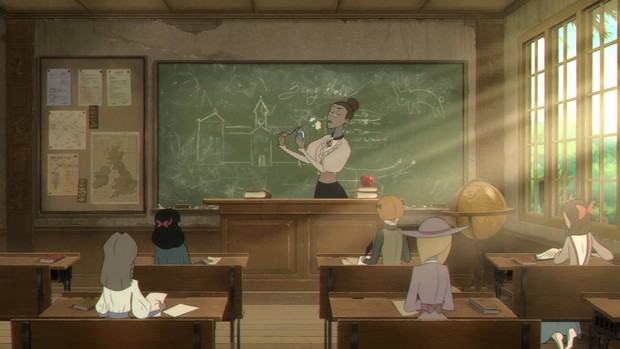
While a large part of Bye Sweet Carole’s puzzle-solving is handled through pushing levers and hitting switches to open doors or activate electrical devices such as elevators, many situations require picking up items and utilizing them like in a traditional adventure game. Any objects you collect are stored in your inventory, accessible with a simple button press, and you can combine items when the need arises. The signposting of puzzles is solid throughout, and at no point was I questioning what to use with what in order to move forward. With that said, there is no hint system of any kind, and figuring out a tricky conundrum while dodging a homicidal Hunter may be difficult for some players.
Yes, in certain parts of the game you will have to contend with various adversaries that wish to take Lana down. Each of these sections typically has a few rooms you wander between, attempting to solve environmental puzzles while keeping yourself away from the Hunter however possible. Each Hunter is unique to that bit of the story, and can vary from a giant rabbit in a dress carrying a massive meat tenderizer to a mannequin with a large red eye on the back of its head.
While Hunters have their own set of particular behaviors, you want to do whatever you can to evade them if at all possible. A large rabbit-faced woman in maid garb wanders the attic, patrolling back and forth if she hears even the slightest sound. Another area is watched by a terrifying eldritch owl creature with elongated limbs and a shawl obscuring most of its face. It likes to pop up in various places akin to Clock Tower’s Scissorman, and is fast enough to run down Lana if you aren’t careful.
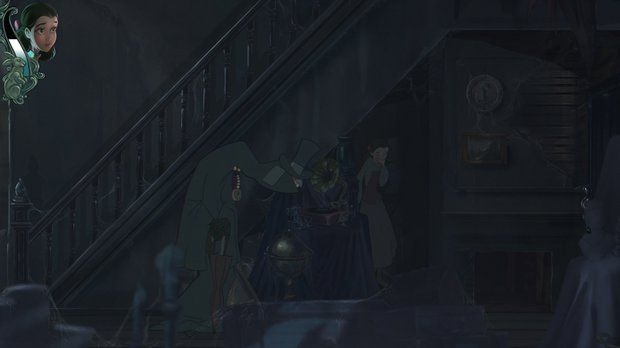
When you’re moving through an environment with a Hunter present, its awareness level is depicted by yellow tendrils slowly making their way across the screen, accompanied by suitably spooky sound effects. If you are spotted, the tendrils will change to red and high-intensity music will signal the start of the monster chasing you down. You can escape by running away, but Hunters are fast and will catch up to you if you don’t find a way to get out of view. Some areas have interactive hiding spots, but even then you must continue to press down a button to hold your breath. If a Hunter walks by and you’re still breathing aloud, it will reach in and drag you out and immediately start chasing you. You can’t hold your breath forever, though – hold it too long and Lana will pass out.
Lana’s health is shown at the top left of the screen at all times. Whenever you are still, if your health isn’t at maximum it will gradually recover over time. If you get hit by a Hunter, your health will deplete accordingly, and getting hit enough times means Lana will die. The young protagonist can meet an untimely demise in other ways too, such as falling off a ledge if you fail to balance yourself in real time by keeping an on-screen meter straight with your movement inputs. Thankfully, neither dying nor fainting is much of a setback; whenever you lose consciousness or your health hits zero, you will be taken back to the most recent checkpoint Lana has passed.
Checkpoints are represented by colorful mailboxes that Lana can examine to manually trigger an auto-save. Progress is also recorded after key story moments and in between each of the game’s ten chapters, as indicated by a small icon appearing at the bottom of the screen. There is no manual save option aside from the mailboxes, unfortunately, but the auto-save system is forgiving enough to prevent losing any major progress if Lana meets an unfortunate end.
All of the enclosed areas in which you have to avoid a killer are challenging to some extent, but certain Hunters are significantly more difficult to deal with than others. I actually found one of the earlier stalkers to be way harder to evade than the later ones, mainly due to the layout of the area being pretty constrictive, with a large number of moving parts to the puzzle required to progress in that section.
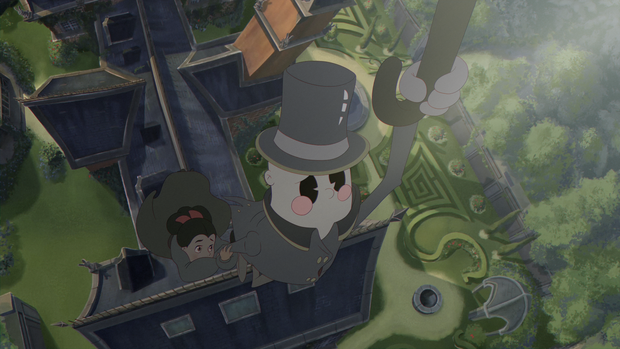
Fortunately, Lana isn’t entirely on her own or without some tricks up her sleeve in meeting these creatures head-on. After a pivotal moment in the story, Lana will gain the ability to transform into a rabbit at will. While she takes more damage from pursuers in this form, she is much faster and can jump against walls to launch herself from wall to wall in order to reach higher ledges or access smaller openings. Lana will also befriend a mysterious humanoid creature named Mr. Baesie, who (in addition to quickly becoming my favorite character) seems more like a rubber hose-styled animated cartoon than the rest of the cast’s more grounded models. Baesie can separate his head from his body to move around independently, and he is impervious to harm – he can even set himself on fire or become electrocuted to solve puzzles that need a flame or a quick jolt. The sections where Baesie is playable are limited, but they offer a nice change of pace from the story-focused exploration sequences and the various threats seeking to track you down.
However, Lana’s rabbit form and Baesie’s unique abilities come with some control complications of their own. Where occasionally I had difficulty maneuvering Lana’s human form due to the deliberate response time, the opposite is true of her rabbit form. It’s not because the response time is slow – rather the movements here can be too fast, especially when jumping. I lost count of the number of times I turned into a rabbit to escape a pursuer, leapt towards a wall, then jumped away again accidentally because I was used to Lana pulling herself up in human form. In most cases, the result would be my health being brutalized by a Hunter instead of making a clean getaway.
Baesie, on the other hand, has an unexpected ability to attack with his umbrella when his body is fully formed. In a methodical horror game about avoiding danger and solving puzzles, I was shocked when a health bar and boss name popped up on-screen. Combat basically just consists of Baesie swinging his umbrella around like a massive baton. The first time this happens he’s mowing down waves of corrupted rabbits made of tar, twisted by Mr. Kyn, in order to protect Lana and give her time to figure out a solution to their predicament in the background, and I was genuinely confused by the gameplay shift. It’s pretty mindless, too, as you just keep hitting the same button until enough attackers have been damaged to progress. Thankfully there are only three short combat encounters, but even so it’s a baffling choice to have such a drastic change at all.
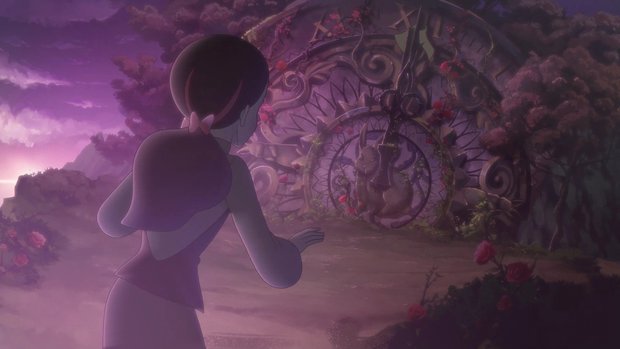
The fantastical nature of Bye Sweet Carole is emphasized all the more by the stunning 2D hand-drawn animation that immediately evokes the work of Don Bluth and the golden era of a certain mouse-centric studio, but with a softness that adds to the dream-like feel of the story and its unusual world. I was in awe during the entire seven hours it took me to reach the game’s conclusion. At times I couldn’t believe that I was actually playing a game with the insanely high production values on display, but then sure enough I’d regain control of Lana after a gorgeous cinematic.
And yet the animation in-game is just as good as the cutscenes; at times it was difficult to even register when a cinematic ended and gameplay began, so smooth was the transition between them. Even when standing idle, Lana will look around while cautiously keeping an eye out for any unfriendly visitors. Every movement is fluid and purposeful, and backgrounds are detailed with meticulously placed elements: a dusty basement of Bunny Hall is filled with cobwebs strewn across forgotten tools and old furniture, while the gloomy swamps outside the grounds of the orphanage are filled with spindly dead trees and thick fog. Parallax scrolling is utilized to great effect, with various objects and silhouettes present in the foreground that provide greater sense of depth to the environments.
The musical score is equally wonderful, with songs that have a whimsically warped feel when Hunters are about, while the flowery garden within the walls of Bunny Hall has a fresh, hopeful vibe with light musical tones. There’s a huge variety of tracks and even a full-blown lyrical piece that plays during the credits that wouldn’t be out of place in a theatrical feature film. Sound effects are suitably unsettling for the monsters you encounter, and even Lana’s footsteps change depending on the type of surface she’s walking across. Of note if you are easily upset by violence against animals (in this case particularly rabbits), you may want to be wary of certain scenes here, especially the giant crazed meat tenderizer rabbit lady. While nothing overtly graphical is shown, there’s a large number of rabbit carcasses hanging in the area she patrols, and she makes full use of them in her kitchen (when she’s not chasing Lana). There are some rather horrific squelches I will be hearing in my nightmares for a while.
The characters are all fully voiced, aside from Lana’s thoughts that appear only in a text box when she’s not speaking aloud, and the acting is excellent. A narrator chimes in at various parts of the game like he’s reading a storybook, adding even more of a dark fairy-tale feel to the experience. Lana sounds age-appropriate, with a wonderful performance by English actress Elsie Lovelock (who also voiced the main protagonist in Chris Darril’s previous game Remothered: Broken Porcelain), and her journey reflects a lot of her own insecurities and worries about growing up a woman in the early 1900s. She’s intrigued by the whispers of a magical kingdom where she might get away from all the uncertainty that comes with growing up in her own world, and the threats she deals with in many ways mimic her own worries about what lies beyond everything she’s come to know at Bunny Hall.
Lana also keeps seeing a rabbit wearing Carole’s glasses in her dreams, leading her along paths of metaphorical breadcrumbs. At least, they appear to be dreams. As the line continues to blur between reality and fantasy in Lana’s world, dark secrets come to light and the worlds of Bunny Hall and Corolla evolve and expand in unexpected ways. I won’t give away anything here, but when I thought I had the story figured out, I was pleasantly surprised to find that my understanding was just scratching the surface of a much deeper tale. I was genuinely moved by Lana’s struggles, and there were some tears during the finale on my part.
Final Verdict
More of an homage to classic Clock Tower than a traditional adventure, Bye Sweet Carole is the kind of game that will either hook you in the first thirty minutes or likely won’t be your cup of tea. It can be both methodical and intense, while also being heartwarming and utterly beautiful to behold. It touches on deeply personal themes and handles difficult topics with grace. The rare but sudden switches to combat feel out of place, and encounters with monsters can sometimes be brutally difficult while simultaneously juggling attempts to solve a puzzle, but a generous checkpoint system never punishes you much for trying new things, even if they end in failure. In between there are many quieter moments of thoughtful gameplay and storytelling, and as a whole this is an incredibly special game that will stick with me for a long time.
Hot take
The methodical gameplay and occasional difficulty spikes of Bye Sweet Carole won’t be for everyone, but for those who crave an old-school stalker horror with a remarkably poignant story tying everything together, there is nothing else out there quite like this incredibly gorgeous, genre-defying gem.
Pros
- Stunning 2D animation both in-game and during cutscenes
- Stellar voice acting and orchestral score
- Powerfully resonant story about growing up
- Measured pace of gameplay heightens the intensity of intermittent monster encounters
Cons
- Uneven difficulty, especially in Hunter confrontations
- Minor control issues can result in death
- Rare combat sequences feel out of place
Sam played Bye Sweet Carole on PC using a review code provided by the game's publisher.


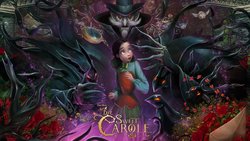
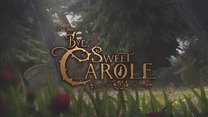
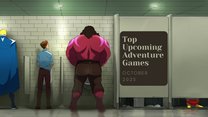

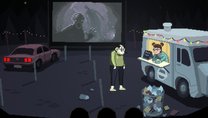
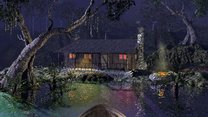
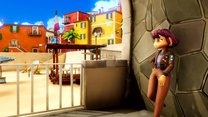

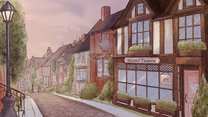
2 Comments
Want to join the discussion? Leave a comment as guest, sign in or register.
88% is a joke. This game has beautiful animantion, but thats all. And mainly, it is not adventure. It has story, but gameplay is terrible.
Reply
Hard disagree Jerry. Id give it 85%, I didn't like the rabbit jumping sections and it needs polish. But overall it's fantastic. Frankly your comment is a joke.
Reply
Leave a comment